Brain Research |
|
Istraživanje mozga |
The humanity switch

|
|
Trenutak nastanka čovječanstva

|
The SRGAP2 gene

|
|
Gen SRGAP2

|
The modified brains

|
|
Izmijenjeni mozgovi

|
The timing of the duplications

|
|
Izbor trenutka kopiranja

|
Differences in cognitive abilities

|
|
Razlike u kognitivnim sposobnostima

|
The scars of size

|
|
Ožiljci zbog veličine

|
The human brain

|
|
Ljudski mozak

|
A model of the human brain

|
|
Model ljudskog mozga

|
|
|
|
|
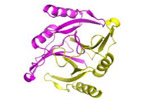
The humanity switch
The stage was set.
Around 2.5 million years ago, the erroneous duplication of a single gene changed the course of our brains' evolution forever.
Suddenly, our ancestors' neurons developed complex shapes that made them capable of exchanging information with a larger number of neighbouring cells.
At the same time, infant skulls became more flexible, allowing them to accommodate larger brains.
Three new studies reveal this remarkable sequence of events.
They also show that the changes happened precisely at the same time as our own Homo genus split from the australopithecines.
Gene duplications are rare in human history.
Only about 30 genes have copied themselves since we split from chimps between 4 and 6 million years ago...
 Search for more... Search for more...
The stage was set.
Around 2.5 million years ago, the erroneous duplication of a single gene changed the course of our brains' evolution forever.
Suddenly, our ancestors' neurons developed complex shapes that made them capable of exchanging information with a larger number of neighbouring cells.
At the same time, infant skulls became more flexible, allowing them to accommodate larger brains.
Three new studies reveal this remarkable sequence of events.
They also show that the changes happened precisely at the same time as our own Homo genus split from the australopithecines.
Gene duplications are rare in human history.
Only about 30 genes have copied themselves since we split from chimps between 4 and 6 million years ago.
The few that have been studied are very exciting, says geneticist Evan Eichler of the University of Washington in Seattle.
» Search for more...
|
|

Trenutak nastanka čovječanstva
Pozornica je postavljena.
Prije otprilike 2,5 milijuna godina, kriva duplikacija jednog gena zauvijek je promijenila smjer evolucije naših mozgova.
Odjednom su neuroni naših predaka razvili složene oblike koji su im omogućili razmjenu informacija s većim brojem susjednih stanica.
Istovremeno su dječje lubanje postale fleksibilnije, omogućujući smještaj većih mozgova.
Tri nova istraživanja otkrivaju ovaj izuzetan slijed događaja.
Ona također pokazuju da su se promjene dogodile upravo u trenutku kada se naš vlastiti rod, Homo, razdvojio od australopiteka.
Duplikacije gena su rijetke u ljudskoj povijesti.
Svega se oko 30 gena kopiralo otkad smo se odvojili od čimpanzi prije otprilike 4 do 6 milijuna godina...
 Potraži više... Potraži više...
Pozornica je postavljena.
Prije otprilike 2,5 milijuna godina, kriva duplikacija jednog gena zauvijek je promijenila smjer evolucije naših mozgova.
Odjednom su neuroni naših predaka razvili složene oblike koji su im omogućili razmjenu informacija s većim brojem susjednih stanica.
Istovremeno su dječje lubanje postale fleksibilnije, omogućujući smještaj većih mozgova.
Tri nova istraživanja otkrivaju ovaj izuzetan slijed događaja.
Ona također pokazuju da su se promjene dogodile upravo u trenutku kada se naš vlastiti rod, Homo, razdvojio od australopiteka.
Duplikacije gena su rijetke u ljudskoj povijesti.
Svega se oko 30 gena kopiralo otkad smo se odvojili od čimpanzi prije otprilike 4 do 6 milijuna godina.
Onih nekoliko koliko je do sada proučavano su vrlo uzbudljivi, kaže genetičar Evan Eichler sa Sveučilišta Washington u Seattleu.
» Potraži više...
|
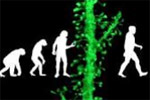
The SRGAP2 gene
Eichler and Franck Polleux of the Scripps Institute in La Jolla, California, focused on the SRGAP2 gene.
This gene helps drive development of the neocortex, which in humans controls higher-order brain functions such as language and conscious thought.
Humans with mutations in SRGAP2 are prone to epileptic seizures, as are mice that have been engineered to lack it...
 Search for more... Search for more...
|
|

Gen SRGAP2
Eichler i Franck Polleux sa Instituta Scripps u gradu La Jolla, Kalifornija, fokusirali su se na gen SRGAP2.
Ovaj gen pomaže u poticanju razvoja neokorteksa, koji kod ljudi regulira funkcije mozga višeg reda kao što su jezik i svjesna misao.
Ljudi s mutacijama gena SRGAP2 skloni su epileptičnim napadima, poput miševa kojima je taj gen uklonjen...
 Potraži više... Potraži više...
|
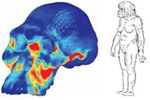
The modified brains
When he inserted human versions of all three genes into mice, the proteins produced by the 2b and 2c genes bound to the original 2a proteins and hindered their ability to do their job.
The net effect of this genetic sabotage was to give the mouse brains more time to develop.
Although the modified brains didn't grow larger, the neurons in its neocortex changed to look like human brain cells.
The spines that neurons use to exchange information with other cells grew thicker, longer and in greater numbers than in normal mouse neurons.
This, say the researchers, would be likely to increase the brain's processing power...
 Search for more... Search for more...
|
|

Izmijenjeni mozgovi
Kada je u miševe umetnuo ljudske verzije sva tri gena, proteini koje su proizveli geni 2b i 2c vezali su se uz originalne proteine 2a i sprečavali ih u obavljanju njihovog posla.
Neto učinak ove genetičke sabotaže bio je dati mozgovima miševa više vremena da se razviju.
Iako izmijenjeni mozgovi nisu postali veći, neuroni u neokorteksu su promijenili izgled i počeli sličiti stanicama ljudskog mozga.
Trnovi koje neuroni koriste za razmjenu informacija s drugim stanicama postali su deblji, dulji i brojniji nego kod normalnih neurona miševa.
Znanstvenici kažu da to vjerojatno povećava moć obrade mozga...
 Potraži više... Potraži više...
|

The timing of the duplications
The timing of the duplications is significant.
The first happened 3.4 million years ago, which corresponds with when "Australopithecus afarensis" first began using tools, says Dean Falk of Florida State University in Tallahassee.
Better still, the second duplication was 2.5 million years ago - when our genus, Homo, began separating from the now-extinct Australopithecus.
"I'm really excited about this", Falk says, in part because it suggests human intelligence has as much to do with brain connectivity as size...
 Search for more... Search for more...
|
|

Izbor trenutka kopiranja
Važan je izbor trenutka kopiranja.
Prvo se dogodilo prije 3,4 milijuna godina, što odgovara trenutku kada je "Australopithecus afarensis" prvi put počeo koristiti oruđe, kaže Dean Falk sa Državnog sveučilišta Floride u Tallahasseeu.
Tim više, do drugog kopiranja došlo je prije 2,5 milijuna godina - kada se naš rod, Homo, počeo odvajati od danas izumrlog australopiteka.
"Stvarno sam uzbuđen zbog toga", kaže Falk, djelomice zato što to znači da ljudska inteligencija jednako ovisi o povezanosti mozga kao i njegovoj veličini...
 Potraži više... Potraži više...
|

Differences in cognitive abilities
What's interesting about the SRGAP2 duplication, Eichler says, is that it would have changed brain development immediately and dramatically.
Human ancestors with two, three or even more copies of the gene - and consequently stark differences in their cognitive abilities - could have coexisted at one point.
"That's fun to think about", he says.
The researchers suspect other gene duplications will hold even more secrets about how our brains evolved.
"We still have a few hundred gaps in the human genome and that's precisely where those duplicated genes are mapping", says Eichler...
 Search for more... Search for more...
|
|

Razlike u kognitivnim sposobnostima
Eichler kaže da je kod kopiranja SRGAP2 zanimljivo to što bi to odmah dramatično promijenilo razvoj mozga.
Ljudski preci s dvije, tri ili još više kopija gena - te stoga s velikim razlikama u kognitivnim sposobnostima - mogli su koegzistirati u jednom trenutku.
"To je zabavna pomisao", kaže.
Znanstvenici nagađaju da će druga genska kopiranja čuvati još više tajni u vezi s načinom na koji su naši mozgovi evoluirali.
"Još uvijek imamo nekoliko stotina praznina u ljudskom genomu i upravo tamo se smještaju ti kopirani geni", kaže Eichler...
 Potraži više... Potraži više...
|

The scars of size
The 2.5-million-year-old child skull is small enough to fit in the palm of a hand.
All that's left of it are a face, jaw and an internal cast of the braincase that formed when sediment replaced its rotting brain.
The cast gives us an idea of what the brain of a young "Australopithecus africanus" looked like.
Dean Falk noticed a faint ridge running from the top of the brain cast down towards the face.
She says it shows that the two bones of the forehead had not fused together when the child died, between its 3rd and 4th birthday.
As a result, sediment was able to push into the gap between the bones.
That's unusual...
 Search for more... Search for more...
|
|

Ožiljci zbog veličine
Lubanja djeteta stara 2,5 milijuna godina dovoljno je mala da stane na dlan.
Od nje su ostali samo lice, čeljust i unutarnji odljev nerokranija koji je stvoren kada je sediment zamijenio njegov mozak koji je trunuo.
Odljev nam daje ideju o tome kako je mogao izgledati mozak mladog "Australopithecusa africanusa".
Dean Falk je primijetila blagi greben koji se spušta s vrha odljeva mozga prema licu.
Ona kaže da to pokazuje kako se dvije kosti čela nisu spojile kada je dijete umrlo, između svojeg trećeg i četvrtog rođendana.
Kao rezultat toga, sediment je mogao prodrijeti u otvor između kosti.
To je neobično...
 Potraži više... Potraži više...
|
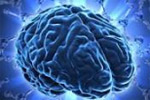
The human brain
Part bodily organ, part metaphysical playground, the brain encompasses the meeting place of consciousness and biological activity.
It has demanded the attention and curiosity of scientists for decades.
Still, despite rapid advances in science, the secrets of the human brain remain elusive.
As early as the 19th century scientists discovered that the brain and other components of the nervous system were made up of cells with unique shapes and functions.
They named these cells neurons.
By the 1950s scientists determined that communication between neurons involved an electrical component.
The electrical activities of neurons could be measured and their patterns dissected.
Since the early 1950s scientists have attempted to use mathematical models to simulate and predict the activity of neurons.
As the technology to study neuronal activity has advanced so have the ambitions of the scientific world.
Scientists are moving toward a more complete understanding of the interactions between neurons.
Eventually, detailed knowledge of these interactions may lead to a deeper understanding of the entire human brain.
There are currently multiple groups attempting the goliath task of simulating of the brain.
The first step is usually to create a model that can simulate the activity of a single neuron...
 Search for more... Search for more...
|
|

Ljudski mozak
U mozgu, koji je dijelom tjelesni organ, a dijelom metafizičko igralište, susreću se svijest i biološka aktivnost.
Desetljećima je plijenio pažnju i zanimanje znanstvenika.
Pa ipak, unatoč brzom napretku znanosti, tajne ljudskog mozga ostaju neshvatljive.
Već u 19. stoljeću znanstvenici su otkrili da se mozak i ostali elementi živčanog sustava sastoje od stanica jedinstvenih oblika i funkcija.
Te su stanice nazvali neuronima.
Do 1950. su godine znanstvenici utvrdili da komunikacija između neurona uključuje električnu komponentu.
Mogle su se mjeriti električne aktivnosti neurona i ispitati njihovi obrasci.
Od ranih 1950-ih godina znanstvenici su pokušali koristiti matematičke modele da bi simulirali i predvidjeli aktivnost neurona.
Kako je tehnologija za istraživanja neuronske aktivnosti uznapredovala, uznapredovale su i ambicije znanstvenog svijeta.
Znanstvenici napreduju prema potpunijem razumijevanju interakcija između neurona.
Na kraju, dobro poznavanje tih interakcija može dovesti do boljeg razumijevanja cjelokupnog ljudskog mozga.
Trenutačno postoji više skupina koje se okušavaju u iznimno teškom zadatku simulacije mozga.
Prvi korak je obično izraditi model koji može simulirati aktivnost jednog neurona...
 Potraži više... Potraži više...
|
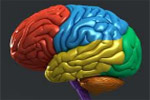
A model of the human brain
How far away is a real-time, full-scale model of the human brain?
In 2005 Izhikevich ran a simulation of the human brain, accounting for the one hundred billion neurons present and their quadrillion synapses.
The simulation lasted for 1 second but required 50 days of computer processing time.
While no scientific data can be gleaned from 1 second of simulation, claims it was valuable for insight into what it would take to create a real-time working model of the human brain.
At the time of the simulation Izhikevich believed a full-scale real-time model could be a reality by 2016.
A full-scale simulation of the human brain would be an invaluable tool to scientists...
 Search for more... Search for more...
|
|

Model ljudskog mozga
Koliko još treba proći vremena prije nego što budemo bili u stanju stvoriti kompletan model ljudskog mozga u stvarnom vremenu?
Izhikevich je 2005. godine napravio simulaciju ljudskog mozga, koja se sastojala od stotinu milijardi prisutnih neurona i njihovih bilijardu sinapsi.
Simulacija je trajala jednu sekundu, ali je zahtijevala 50 dana računalne obrade.
Iako se na temelju jedne sekunde simulacije ne mogu prikupiti znanstveni podaci, tvrdi se da je to bilo korisno za uvid u ono što je potrebno da bi se stvorio model ljudskog mozga koji radi u stvarnom vremenu.
U vrijeme simulacije, Izhikevich je vjerovao da bi kompletan model u realnom vremenu mogao postati stvarnost do 2016. godine.
Potpuna simulacija ljudskog mozga znanstvenicima bi bila alat od neprocjenjive vrijednosti...
 Potraži više... Potraži više...
|
|
|




